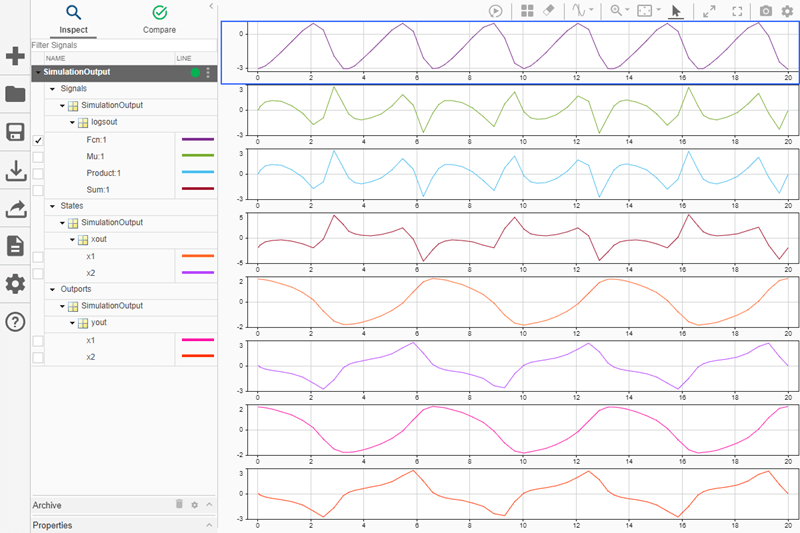plot
Plot data in Simulation Data Inspector
Description
Use the plot function to plot data contained in objects such
as Dataset, SimulationOutput, or Signal
objects in the Simulation Data Inspector.
For more information about interactively plotting data in the Simulation Data Inspector and customizing the plot appearance, see Create Plots Using the Simulation Data Inspector.
To create a 2-D line plot in a MATLAB® figure, see plot.
plot( plots the simulation results in the
object obj)obj in the Simulation Data
Inspector and opens the Simulation Data Inspector. You can use the
plot function to plot data and simulation results stored in an object
such as:
When the input object contains fewer than eight signals, the Simulation Data Inspector
layout changes to 1-by-n, where n
is the number of signals, and each subplot displays one signal. When the simulation results
contain more than eight signals to plot, the Simulation Data Inspector layout changes to
1-by-1, and the plot displays the first
signal.
runObj = plot(___)Simulink.sdi.Run object that corresponds to
the plotted data.

